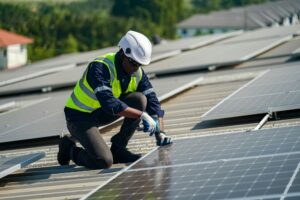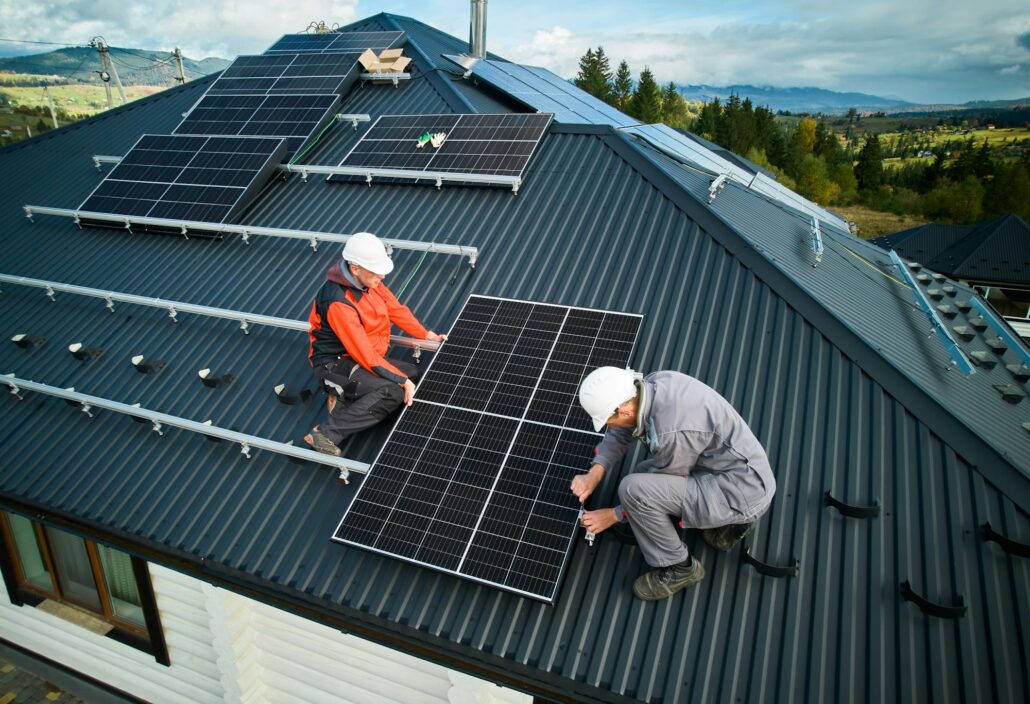Solar power is gaining momentum as a leading source of renewable energy, with more homeowners turning to solar panels to reduce electricity bills and minimize their carbon footprint. However, timing is critical when it comes to installing solar panels, and one season stands out: fall.
Here’s why autumn is often considered the best time of year for solar panel installation.
Fall offers the perfect weather balance for solar panel installation. The mild temperatures ensure that the solar panels can be installed more comfortably and efficiently by technicians.
During the summer, extreme heat can make rooftop work dangerous and uncomfortable, leading to potential delays in the installation process. In contrast, winter conditions like snow, ice, and freezing temperatures make installation challenging.
Pro Tip: Installing panels in fall also allows your system to be fully operational before winter hits, ensuring your home can start capturing sunlight during the coldest months when energy consumption for heating is higher.
Want more info about solar panel efficiency during winter? Read our article:
The Winter Advantage: Unveiling the Benefits of Solar Panels in Cold Months
By installing solar panels in the fall, you can prep your system’s ability to capture the maximum amount of sunlight when days grow longer in spring and summer. Solar panels need some time to be inspected and connected to the grid after installation.

The permitting process may take weeks. Scheduling often takes additional time due to the availability of local contractors or utility companies. By getting panels up in the fall, you ensure that your system is ready to harness the sun’s power in time for the sunniest seasons.
Note: Spring and summer are typically when homeowners see the highest electricity usage due to air conditioning, making it essential to have a system fully functioning to offset these costs.
One major advantage of a fall solar installation is the potential to capitalize on federal, state, and local tax incentives before the end of the year. In the US, the federal solar Investment Tax Credit (ITC) allows homeowners to claim a percentage of their solar installation costs as a tax deduction.
Fall is typically a slower season for solar contractors. In the spring and summer, when solar panel installations peak, solar companies become overbooked, leading to longer wait times for installations.
By opting for a fall solar installation, you’re more likely to secure faster service, and possibly at a better price, as some companies may offer off-season discounts to fill their schedule.

Fall solar installation helps you prepare for winter when energy consumption increases due to heating systems and longer nights. Although solar panels are most efficient during sunny months, they still generate electricity even during overcast or snowy days.
Pro Tip: Having a functioning solar system during the winter months can help offset increased energy use, reducing your reliance on the grid when electricity rates may spike.
Curious about system maintenance during winter? Check out our article: Keeping Your Solar Panels Efficient During Winter Weather: What You Need to Know
Fall is an ideal time to invest in solar panel installation. The mild weather conditions allow for quicker and safer installations, and by having your system operational by winter, you can maximize your energy savings throughout the colder months and prepare for peak production in the spring and summer.
Author: Hunter S.
Give Gurr Brothers Energy a call today and let’s start powering your life with sunshine!